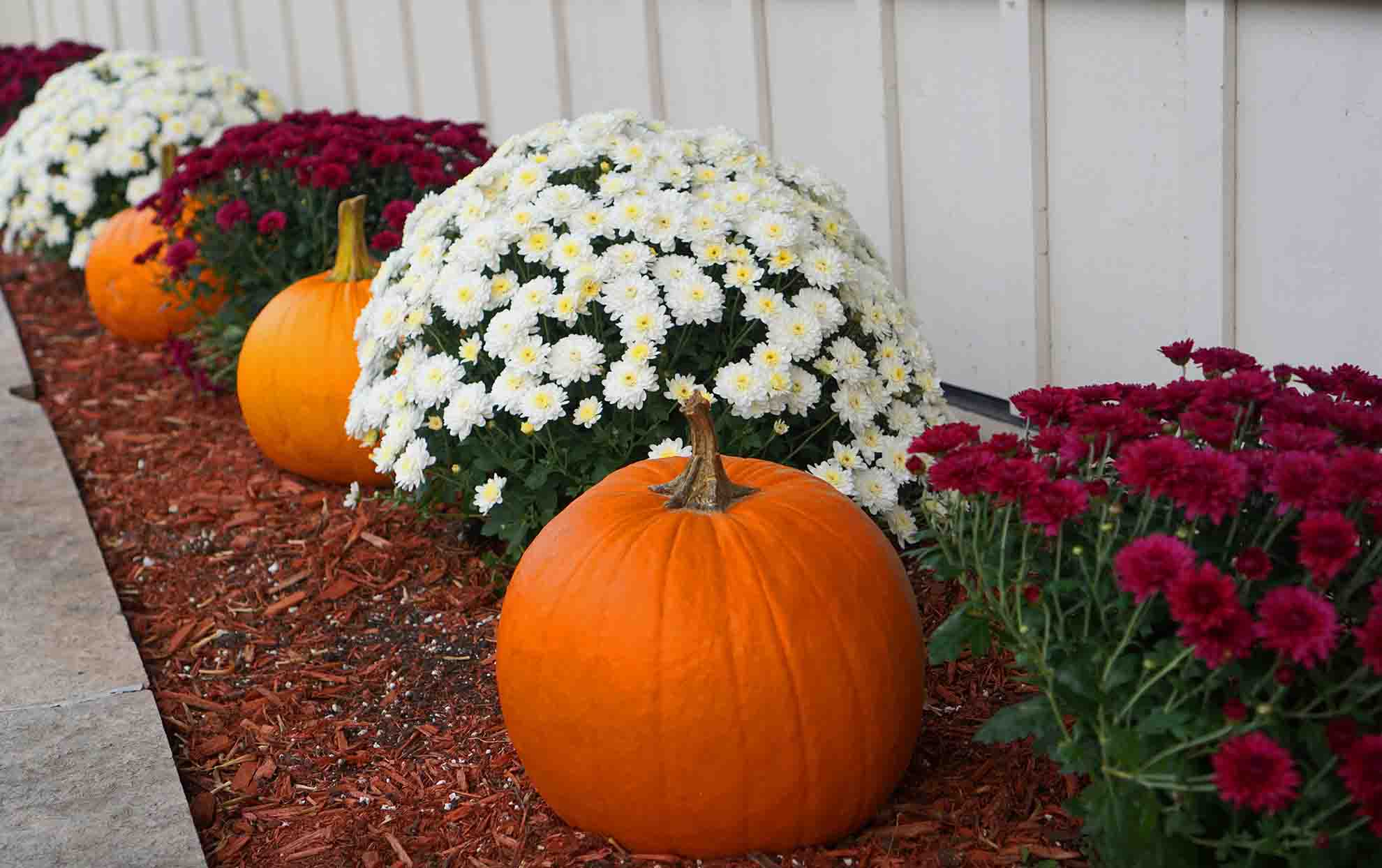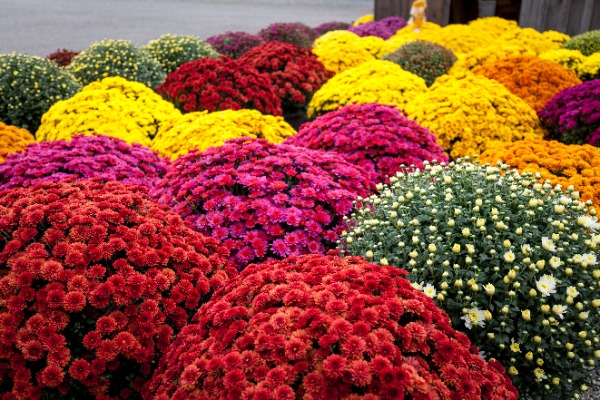Mums, also known as chrysanthemums, are one of the most popular flowers for fall gardens in Nebraska. While many people enjoy buying potted mums in the fall to decorate their porches, not everyone realizes that mums can also be grown as reliable perennials in the garden when they are planted and cared for properly.
If you are new to mums, understanding the basics of when to plant them, how to care for them, and how to help them return year after year can make all the difference in your flower beds!

Chrysanthemums, often simply called mums, are flowering plants that belong to the daisy family. They have been cultivated for centuries, originally in China, where they were valued for both their ornamental and medicinal qualities. Today, mums are primarily grown for their decorative beauty, with varieties that range in size, shape, and color. Some produce tightly packed, rounded blooms, while others have spiky petals or more daisy-like appearances.
Mums are classified as short-day plants, meaning they produce flowers when the days grow shorter and nights grow longer, which makes them naturally suited to bloom in the late summer and fall. Because of this trait, mums are widely associated with autumn gardens and fall decorations across the Midwest.
Identifying Mums:

Timing is one of the most important factors in successfully growing mums in Nebraska. While mums are most often sold in garden centers during the fall, planting them that late in the season doesn’t give their roots enough time to establish before winter arrives. Nebraska’s cold winters can be tough on new plants, and mums planted in September or October are often treated as annuals rather than perennials.
For best results, mums should be planted in the spring. Planting in May or early June allows the roots to spread and strengthen throughout the warm months, giving the plant a much better chance of surviving the winter and returning the next year. If you do purchase mums in the fall, you can still enjoy them as seasonal decoration, but know that they may not overwinter successfully unless you provide extra care and insulation.

Mums thrive in sunny locations. To produce the biggest and brightest blooms, they need at least six hours of direct sunlight each day. A spot with morning sun and some afternoon shade is ideal in Nebraska, since hot late-summer afternoons can sometimes be harsh.
Well-draining soil is also crucial. Mums dislike having their roots sit in water, and soggy soil can quickly lead to root rot. If your garden soil is heavy with clay, consider amending it with compost or planting mums in raised beds where drainage can be better controlled.

When planting mums, dig a hole just deep enough to cover the root ball and twice as wide to give roots room to spread. Set the plant in the hole at the same depth it was growing in its nursery pot. After filling in the soil, gently press down around the base to remove air pockets and water thoroughly to help the roots settle.
Spacing is also important. Mums grow outward as they mature, so it’s best to leave about 18 to 24 inches between plants. This not only gives them room to expand but also allows for good air circulation, which reduces the risk of disease.
Guidelines For Planting Mums:
Newly planted mums need consistent moisture as their roots become established. Water deeply at least once or twice a week, depending on rainfall, so the soil stays evenly moist but not soggy. Once established, mums are fairly low maintenance, but they still appreciate regular watering during hot or dry spells.
Fertilizer can also help mums thrive. Use a balanced, slow-release fertilizer in the spring and early summer to encourage strong root growth and healthy foliage. Avoid heavy fertilization later in the season, as this can delay blooming.

One of the most important steps in caring for mums is pinching. Pinching refers to gently removing the tips of new growth in the early part of the growing season. By pinching back the stems when they are about 6 inches tall, you encourage the plant to branch out and produce more stems, resulting in a fuller, bushier plant with more blooms in the fall.
Pinching should be done several times between late spring and early July. After July 4th, it’s best to stop pinching, as mums need time to set buds for fall flowers. Skipping this step can lead to tall, leggy plants with fewer flowers.
Since Nebraska winters can be quite cold, protecting mums through the winter is essential if you want them to return year after year. After the first hard frost, mums will die back to the ground. Leave the dead stems in place until spring, as they provide a natural layer of protection for the roots.
In late fall, apply a thick layer of mulch around the base of the plant, about 4 to 6 inches deep. Straw, leaves, or shredded bark work well to insulate the roots from freezing temperatures. In the spring, once the risk of frost has passed, remove most of the mulch and trim away the old stems to allow new growth to emerge.

Mums are relatively hardy plants, but they can sometimes run into issues with pests or diseases. Common problems include aphids, spider mites, and fungal diseases like powdery mildew. Choosing a sunny location with good air circulation and avoiding overhead watering can greatly reduce the risk of these problems.
If you do notice pests, a strong spray of water from the hose or an application of insecticidal soap can help manage small infestations. Fungus issues can often be prevented by keeping leaves dry and spacing plants properly.
With the right care, mums can become a colorful and reliable part of Nebraska gardens. Their vibrant blooms provide a burst of color when most other flowers are fading, making them an excellent choice for extending the gardening season into the fall.
Whether you plant them in beds, borders, or containers, mums are versatile and cheerful plants that reward gardeners with beauty year after year. Call us today for more information and help with your Nebraska landscape!